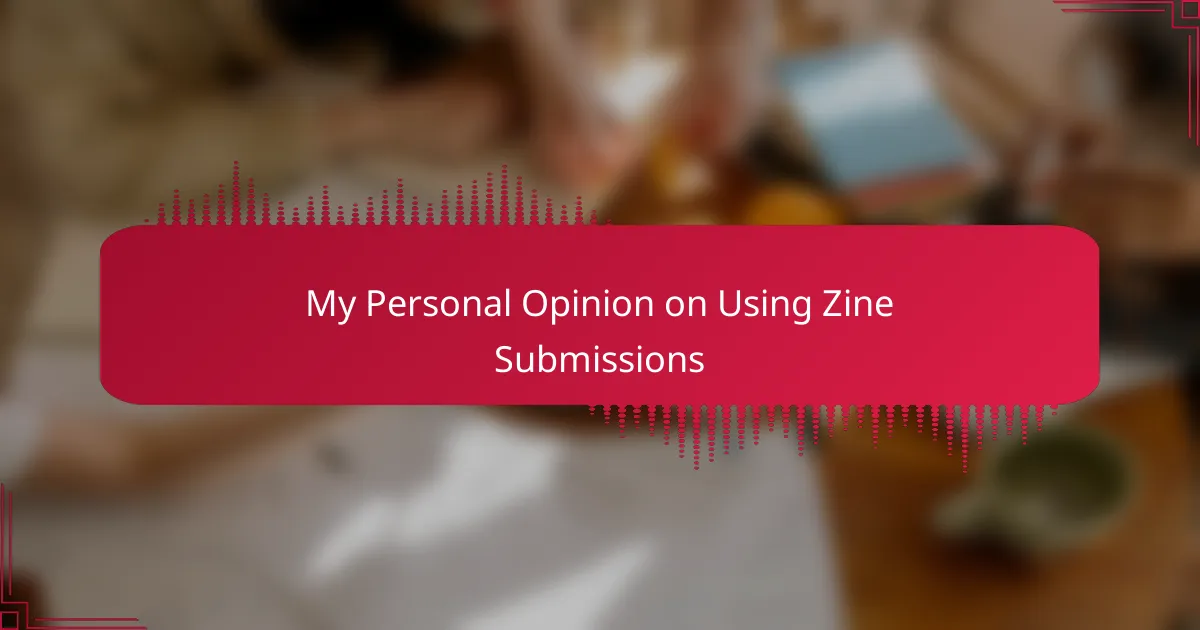Key takeaways
- Zine submissions offer creative freedom and a unique platform for personal expression, allowing artists to experiment beyond traditional publishing constraints.
- Engaging with zines fosters community connections, networking opportunities, and collaboration among creators.
- Successful zine submissions require thorough research, adherence to guidelines, and a clear presentation of your work to stand out.
- Personal experiences with zine submissions highlight the emotional journey and the potential for valuable relationships within the creative community.
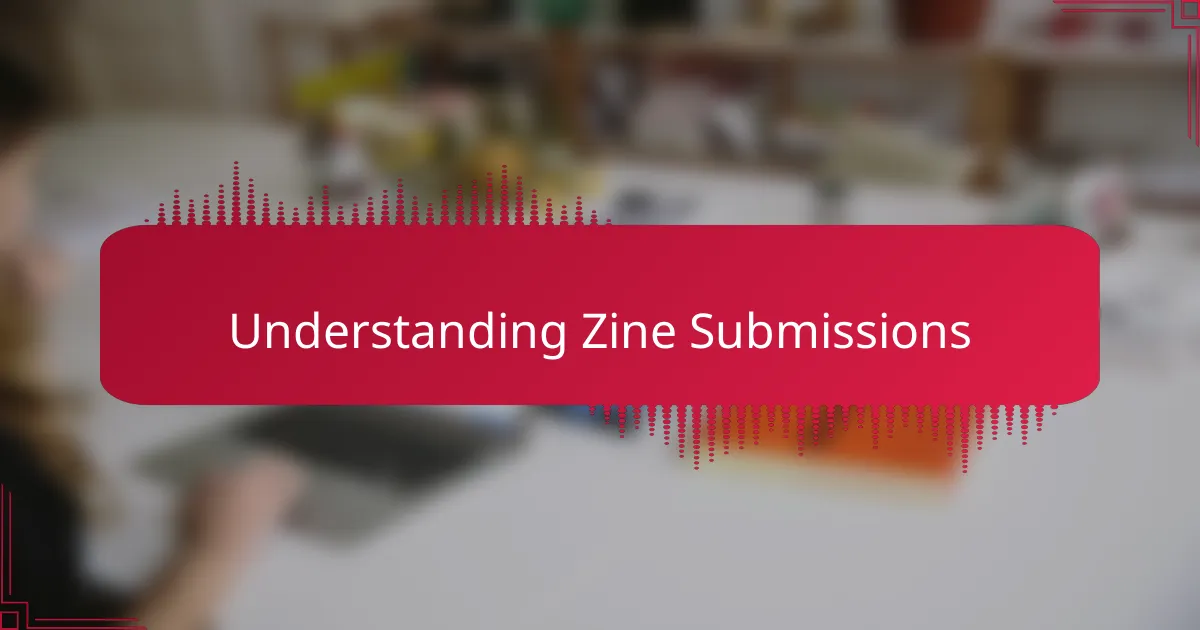
Understanding Zine Submissions
Zine submissions can be an exhilarating way to share your creative work with a wider audience. I remember my first zine submission—it felt like putting a piece of my soul out into the world. Isn’t there something thrilling about knowing your art could resonate with someone else, perhaps even inspire them?
Zines are more than just self-published works; they represent a unique blend of DIY culture and personal expression. Each zine carries the fingerprint of its creator, showcasing a variety of styles, themes, and perspectives. Have you ever wondered how the underground scene thrives? It’s this very diversity that keeps zine culture vibrant and engaging.
The process of submitting a zine may seem daunting at first, but it’s an opportunity to connect with a community of like-minded individuals. I often remind aspiring creators that every ‘no’ is just a step towards the right publication. It’s about finding the right fit for your voice—one that will appreciate your vision as much as you do.
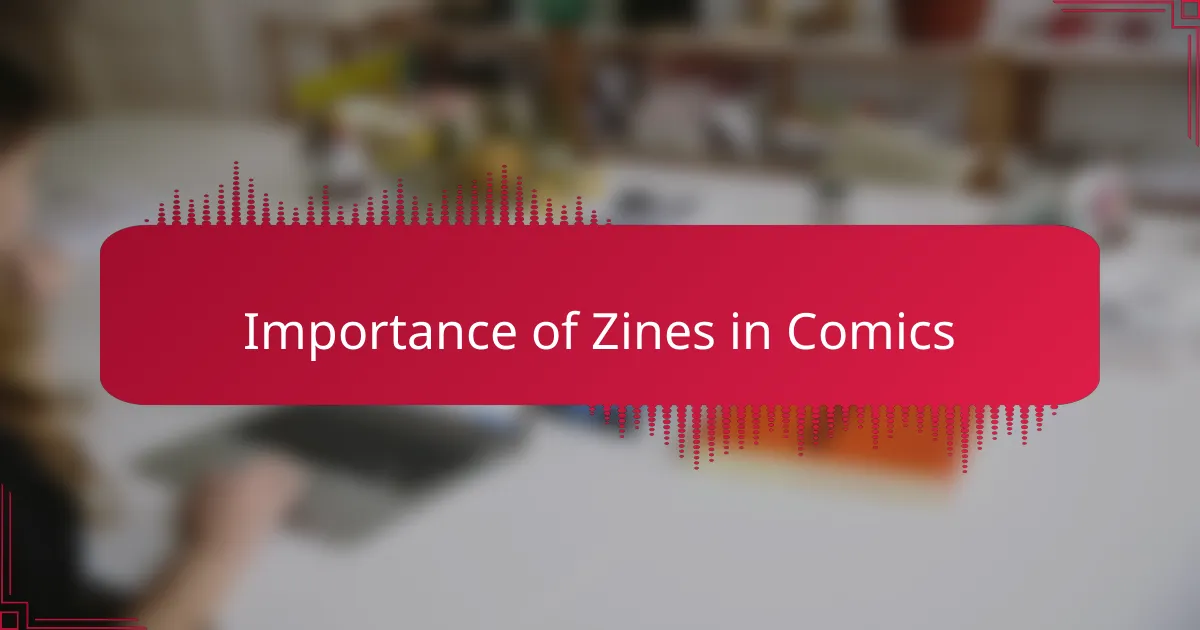
Importance of Zines in Comics
Zines hold a special place in the comic community, serving as a creative outlet for aspiring artists and writers. Personally, I’ve found that zines allow for experimentation without the constraints often felt in mainstream publishing. For many creators, this platform fosters a sense of freedom and individuality, enabling a diverse array of voices to shine through.
The importance of zines extends beyond just personal expression. They create a grassroots connection among creators and fans, often cultivating local comic scenes. I’ve attended zine fairs where the energy and enthusiasm are palpable; the exchange of ideas and support is something you just can’t replicate in larger venues.
Here’s a comparison table that highlights the key aspects of zines versus traditional comic publishing:
| Aspect | Zines | Traditional Publishing |
|---|---|---|
| Creative Freedom | High | Limited by market trends |
| Production Cost | Low | High |
| Distribution | Independent & Local | Wide & Commercial |
| Audience Engagement | Intimate & Direct | Broader but less personal |
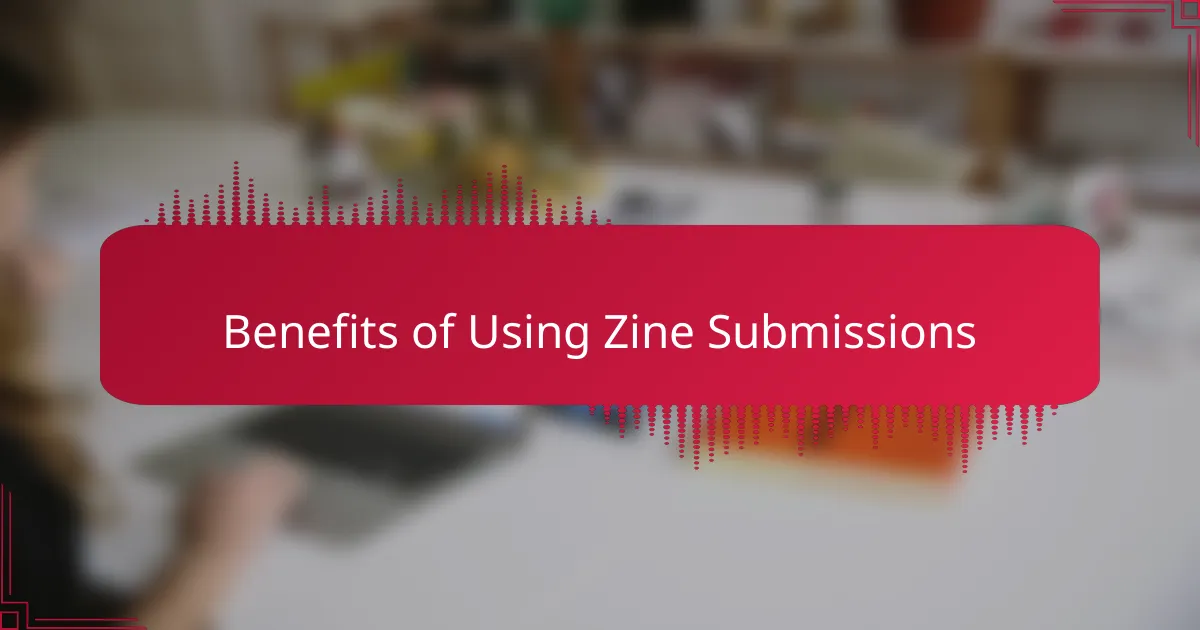
Benefits of Using Zine Submissions
Zine submissions can be a fantastic way to build a community around your work as a comic book author. From my experience, they provide a unique platform to showcase creativity without the constraints often found in traditional publishing. This kind of freedom allows artists to experiment with their style and narratives, often leading to unexpected and delightful results.
Moreover, engaging with zines can significantly enhance your visibility. I remember the thrill of seeing my comic featured in a local zine; not only did it connect me with other creators, but it also attracted new readers who appreciated the indie vibe. The supportive nature of zine culture fosters collaboration and feedback that can be invaluable when honing your craft.
Participating in zine submissions also helps in networking. I’ve met passionate individuals who share my interests and even formed lasting friendships that extended into various creative projects. There’s a genuine sense of camaraderie that’s hard to find elsewhere.
| Benefits | Description |
|---|---|
| Creative Freedom | Zines allow authors to express their unique voice and experiment with unconventional formats. |
| Increased Visibility | Submissions can help authors reach niche audiences while gaining recognition in local and wider communities. |
| Networking Opportunities | Zine culture fosters connections with other creators, opening doors to collaboration and support. |
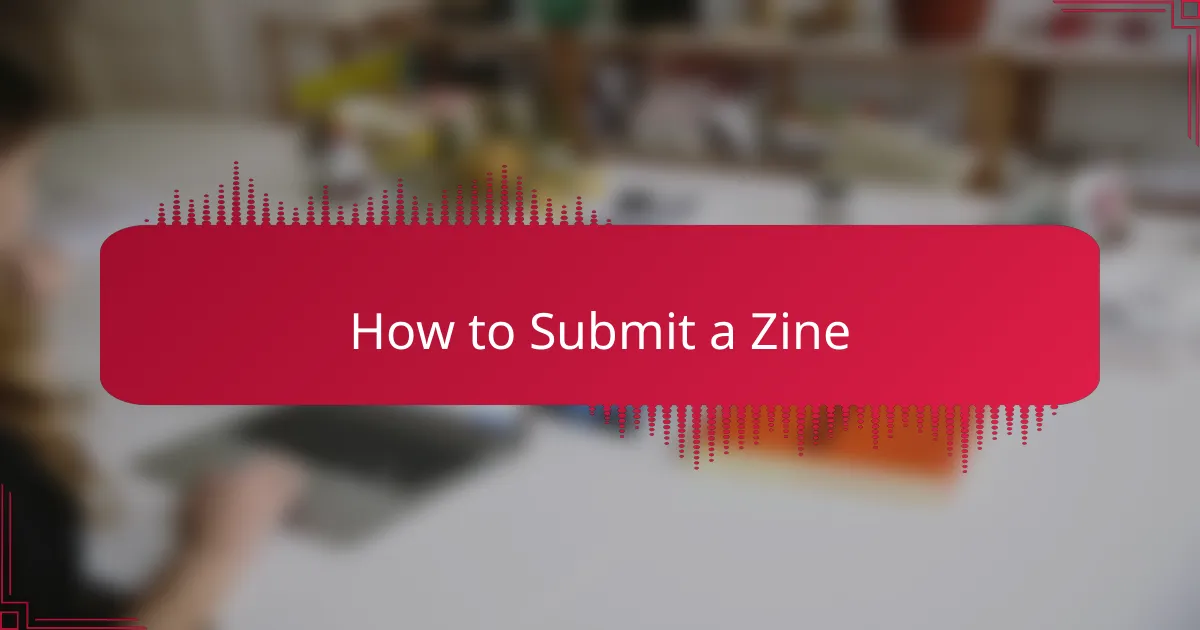
How to Submit a Zine
When it comes to submitting a zine, clarity and presentation are key. From my experience, understanding the specific guidelines of the zine you’re interested in is crucial. I remember the first time I submitted my work; I meticulously checked formatting and followed all requirements, only to realize I had missed a submission window. That taught me the importance of double-checking deadlines and instructions.
Here’s a streamlined approach to ensure your zine submission stands out:
- Research the zine: Familiarize yourself with its theme, style, and audience.
- Follow guidelines: Adhere strictly to submission instructions—these can include file type, word count, and formatting.
- Personalize your submission: Write a brief cover letter expressing why your work fits the zine’s vision.
- Be concise and clear: Keep your submission straightforward and engaging; editors appreciate brevity.
- Double-check deadlines: Mark them on your calendar to avoid last-minute submissions.
- Follow up politely: If you don’t hear back in a reasonable time, it’s okay to send a gentle inquiry.
Each of these steps not only enhances your chances but also reflects your professionalism as a creator, which can ultimately make a lasting impression.
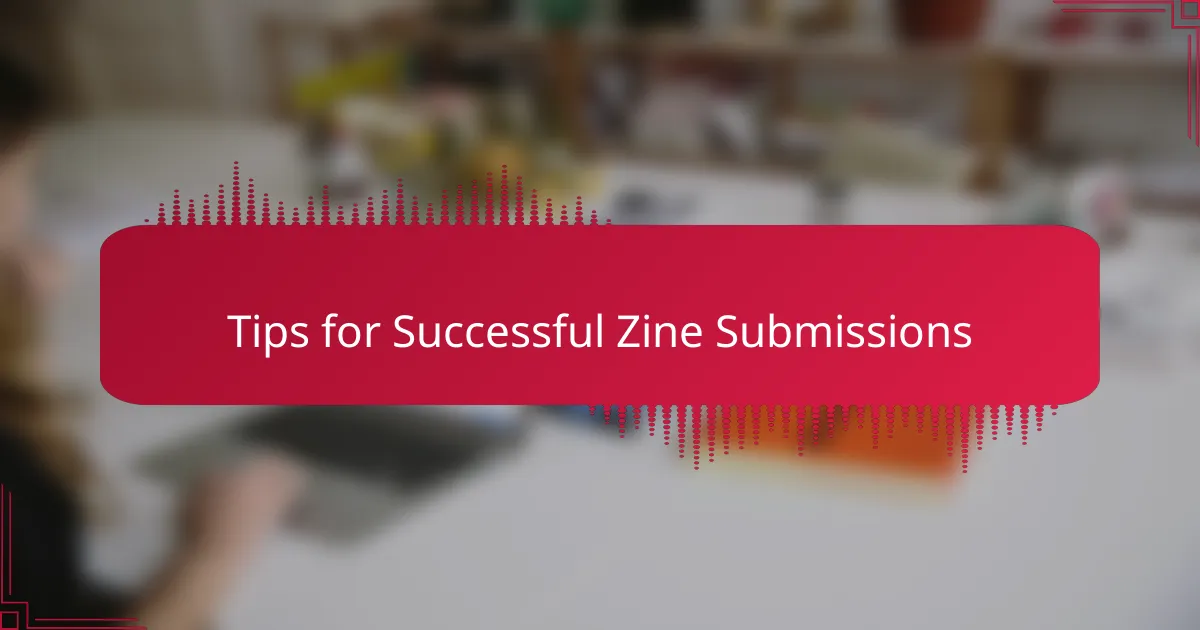
Tips for Successful Zine Submissions
When it comes to submitting your work to zines, I’ve learned that tailoring your submission is key. One zine I submitted to had a very specific aesthetic and audience focus. I took the time to align my art style and story theme to fit what they were sharing, and it paid off. The feeling of having my work resonate with their vision was incredibly rewarding.
Over the years, I’ve gathered a few tips that can really elevate your submission game:
- Research the Zine: Understand their theme, style, and past issues to tailor your work accordingly.
- Follow Guidelines: Ensure you strictly adhere to the submission requirements to show professionalism.
- Be Unique: Don’t be afraid to showcase your voice and creativity. Stand out in a sea of submissions.
- Include a Bio: A short biography can provide context about you as an artist and your inspirations.
- Submit Early: Give yourself enough time to make changes if needed. Early submissions also show good planning.
- Engage with the Community: Interacting with zines on social media can keep you informed and make you a familiar name.
Each of these practices has significantly impacted my acceptances over time, and I hope they can help you too!
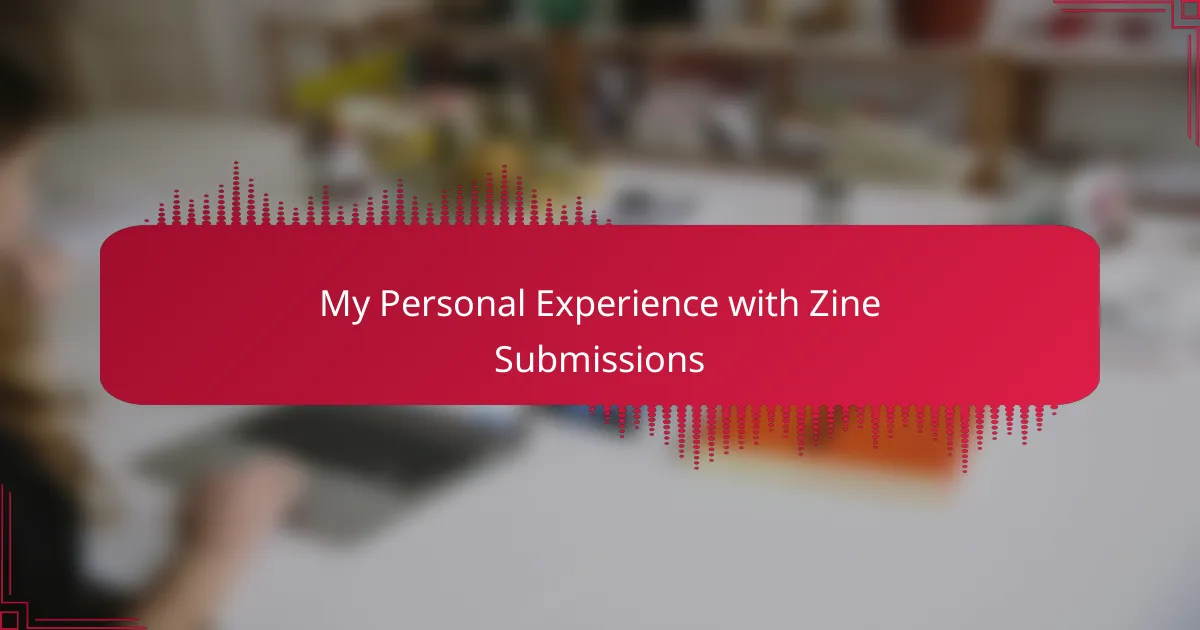
My Personal Experience with Zine Submissions
Submitting to zines has been a transformative experience for me. I still remember the nervous excitement I felt before my first submission. It was a moment where I threw caution to the wind, contemplating whether my work would speak to others. Looking back, each acceptance not only validated my efforts but also fueled my creative passion.
Over the years, I’ve navigated the ups and downs of submitting to various zines. There were definitely rejections that stung a little—those moments were tough. I often questioned myself: Did I miss the mark? But then, the thrill of having my work accepted by a zine that appreciated my unique voice made it all worthwhile. Each “yes” felt like a little triumph, reminding me that my perspective mattered.
Moreover, it was through these submissions that I built meaningful connections with fellow creators. I recall meeting a fantastic illustrator at a zine fair after my work was featured. Our shared love for storytelling sparked a wonderful friendship that led to collaborative projects. Isn’t it amazing how one zine submission can open so many doors? That sense of community keeps me coming back to zines every time I want to share my work.
